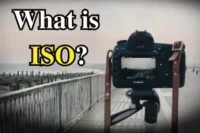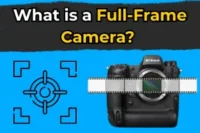DSLR vs Webcam: Which Is Right for Your Video Calls & Streaming?
Published: 24 Jan 2025
Choosing the right camera can be a tough decision in today’s digital world. With so many options available, it’s easy to get confused. Whether you’re streaming on YouTube, video calling, or recording content, the debate between DSLR vs webcam is common. But how do you decide which one is best for you?
In this article, I will explain the differences between a DSLR and a webcam, comparing factors such as video quality, cost, and ease of usage. By the end, you’ll know which camera suits your needs. So let’s dive in.
What is a DSLR Camera?
A DSLR camera stands for Digital Single-Lens Reflex. It’s a type of digital camera used by professional photographers and videographers. DSLRs are popular because they produce high-quality photos and videos, even in difficult lighting conditions.

Unlike a webcam, a DSLR camera allows complete control over settings like focus, exposure, and aperture. This flexibility helps photographers and videographers capture shots exactly how they want them.
Key Features of a DSLR:
A DSLR camera offers several benefits that make it stand out from other camera types. From sharp images to custom lenses, it’s built for people who care about perfecting every shot.
- High-Quality Video and Image: DSLRs are famous for their sharp, clear images and high-resolution video.
- Interchangeable Lenses: You can change lenses based on your needs, whether you need a wide-angle lens for streaming or a portrait lens for photography.
- Manual Settings: You have full control over focus, shutter speed, aperture, and ISO, allowing you to customize your shooting.
| Pros of DSLRs: |
|---|
|
| Cons of DSLRs: |
|---|
|
What is a Webcam?
A webcam is a small camera that connects directly to your computer using USB. It is commonly used for video calls, live streaming, and video conferencing. Webcams are popular because they are easy to use—plug them in, and you’re ready to go.

While webcams don’t offer the high-quality video that a DSLR does, they are more than enough for casual content creators, video conferencing, and even beginner streamers.
Key Features of a Webcam:
Webcams are known for their simplicity and portability. They’re perfect for quick tasks like video calls or casual streaming.
- Plug-and-Play: No setup required. Simply plug it into your computer, and it will start working immediately.
- Built-In Microphone: Most webcams come with a built-in mic, so you don’t need to purchase additional audio equipment.
- Compact and Portable: Webcams are small, lightweight, and convenient to carry with you wherever you go.
| Pros of Webcams: |
|---|
|
| Cons of Webcams: |
|---|
|
DSLR vs Webcam: Key Differences
Now that you have an understanding of both camera types, it’s time to examine the key differences between a DSLR and a webcam.

Video and Image Quality:
Here’s the big one. If quality is your top priority, a DSLR wins hands down.
- DSLR: DSLRs produce sharp, clear images and high-quality video (often 4K resolution) that stand out in any environment. If you’re streaming on YouTube or creating content that requires high quality, a DSLR is the way to go.
- Webcam: Most webcams offer 1080p resolution at best. While this is fine for most uses but it will not provide the crisp detail of a DSLR, especially in low light.
Ease of Use:
Webcams are all about simplicity. They’re designed to make life easy for those who do not want to spend time adjusting camera settings.
- DSLR: DSLRs require more setup and some technical understanding. You need to adjust focus, exposure, and other settings to get the best results.
- Webcam: Plug-and-play. Webcams are really simple to use—just connect them to your computer, and you’re good to go.
Portability:
A webcam is much lighter and more portable, making it a great option for people who need something quick and easy on the go.
- DSLR: Larger and heavier, requiring additional accessories like tripods, lenses, and microphones.
- Webcam: Small and lightweight. You can easily carry it around and set it up in minutes.
Cost:
Here’s the deal—if you have a limited budget, a webcam will save you money.
- DSLR: More expensive overall. You may also need additional equipment, such as lenses, microphones, and capture cards.
- Webcam: A much more affordable option. It is ideal for those people who have a limited budget.
Customization:
If you want to customize your shots for perfect lighting or focus, a DSLR is the best option.
- DSLR: This camera offers complete manual control over your shots. You can adjust everything from focus to ISO to ensure the perfect video or photo.
- Webcam: Limited in terms of customization. It typically offers automatic settings, which means you can’t change things like exposure or focus to your taste.
Comparison Table:
| Feature | DSLR | Webcam |
|---|---|---|
| Video Quality | 4K, high dynamic range | 1080p, lower dynamic range |
| Ease of Use | Needs setup and manual controls | Plug-and-play |
| Portability | Heavy, requires accessories | Light and compact |
| Cost | Expensive (camera + accessories) | Affordable |
| Customization | Full manual control | Limited settings |
| Best For | Professional streaming, vlogging, YouTube videos | Basic streaming, video calls |
Best Use Cases: DSLR vs Webcam
Not sure which one to go with? Let us see where each camera type shines most clearly.
For Streaming:
If you want to create high-quality streams that impress your audience, consider using a DSLR camera.
- DSLR: Perfect for YouTube live streaming or any type of professional streaming. It provides the sharpest video quality.
- Webcam: Great for casual streamers who need something affordable and quick. It works well for less demanding content.
For Photography:
A DSLR is the top choice for those serious about their photography.
- DSLR: Best for high-quality photos, as it provides more control and customization.
- Webcam: Not ideal for photography. It is designed for video, so it will not provide the quality you require for professional pictures.
For Video Calls:
Both cameras work, but if you want to stand out in a Zoom call, a DSLR might be worth the extra effort.
- DSLR: This is ideal if you want to improve the quality of your video calls. You’ll need extra equipment, such as a capture card.
- Webcam: For basic video calls, the webcam is easy to set up and functional.
For Content Creation (YouTube, TikTok, and More):
When it comes to content creation, having the right camera makes a big difference in the quality of your videos and engagement with your audience.
- DSLR: A DSLR is the best choice for content creators looking to produce high-quality YouTube videos, vlogs, or Twitch streams. The ability to change lenses and control settings like focus and aperture gives creators greater creative freedom. It’s perfect for those who want professional-looking results.
- Webcam: A webcam is an excellent alternative for streaming or recording videos for beginners or low-budget creators. It’s easy to set up and less expensive, but the quality may not be as high as a DSLR.
How to Set Up a DSLR for Streaming
Setting up a DSLR for streaming may seem complicated, but it is actually easier than it appears! Follow these steps, and you’ll be ready to go:
- Purchase a capture card or an HDMI-to-USB converter to connect your DSLR to your PC.
- For the best video quality, adjust your camera settings to make sure that the focus, exposure, and aperture are set correctly.
- Set your lighting to avoid creating dark or harsh shadows.
- Test your microphone for clear audio. Consider using an external microphone for better sound.
Conclusion
So, guys, In this article, I have described in detail the difference between a DSLR and a webcam. Both DSLRs and webcams have their unique advantages. If you’re looking for the best video quality and professional streaming, a DSLR is the best option. But if you’re on a tight budget or want something quick and easy for video calls, a webcam is perfect for your needs.
By considering your needs and budget, you can make the right choice for your setup. Do you have any more questions about DSLRs vs. webcams? Feel free to ask in a comment below.
Frequently Asked Questions (FAQs)
Here are answers to some of the most common questions about DSLR vs Webcam:
Yes! You can absolutely use a DSLR as a webcam. With the help of a capture card or HDMI to USB adapter, you can connect your DSLR to your computer for high-quality video calls on platforms like Zoom or Skype. This setup will provide much better image quality than a standard webcam.
A DSLR is generally better for professional streaming due to its superior video quality, sharper details, and depth of field. However, webcams are perfect for casual streaming, offering a more affordable, easy-to-use option. It all depends on your budget and the level of quality you want in your stream.
While you can use a webcam for YouTube videos, the quality won’t compare to a DSLR. Webcams typically offer 1080p resolution, which is fine for casual videos, but they lack the depth of field and sharp detail that a DSLR can provide. If you want high-quality content, a DSLR is the best option.
A DSLR is more expensive because it’s designed for professional use and offers advanced features like interchangeable lenses, manual controls, and high-quality video. Additionally, you’ll need extra accessories such as lenses, microphones, and capture cards, which can add to the cost. Webcams are much simpler and less expensive because they focus on ease of use for basic tasks.
Yes, you will need additional equipment, like a capture card, to connect your DSLR to your computer. You may also require extra microphones for improved sound quality and tripods to stabilize the camera. Proper lighting is also required to avoid shadows and provide the highest video quality.

- Be Respectful
- Stay Relevant
- Stay Positive
- True Feedback
- Encourage Discussion
- Avoid Spamming
- No Fake News
- Don't Copy-Paste
- No Personal Attacks

- Be Respectful
- Stay Relevant
- Stay Positive
- True Feedback
- Encourage Discussion
- Avoid Spamming
- No Fake News
- Don't Copy-Paste
- No Personal Attacks





